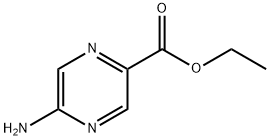Were there any unique research methods or accidental findings involved? Also, does this unexpected reason imply some previously unrecognized evolutionary advantages? For example, could the spots play a more complex role in camouflage, thermoregulation, or social interaction than we thought? And will this new understanding of giraffe spots lead to any changes in our study of other spotted animals or even in wildlife conservation strategies related to giraffes?
Is the reason why giraffes have spots really unexpected? What on earth is the reason?
Related Products More >
-
- equest For Quotation
- 25kg/bag



 沪ICP备2021018848号-5
沪ICP备2021018848号-5

But it's not just about camouflage. The color of the spots, which is darker than the rest of the fur, also affects how giraffes deal with temperature. Scientists from the University of Zurich, like Alexia Mouchet and her colleagues, studied 810 wild Masai giraffes in Tanzania's Tarangire ecosystem. They found that baby giraffes with small lobed spots, and adult male giraffes with either small lobed spots or larger polygonal spots were more likely to survive under normal circumstances.
However, when the average seasonal temperature changed a bit, either higher or lower than the average, things were different. In such cases, the survival rates of adult male and female giraffes were lower. When it was abnormally cold, baby giraffes and adult male giraffes with larger spots had higher survival rates, while when it was very hot, those with smaller spots had a better chance of survival. And the spot pattern didn't seem to have much impact on the survival rate of adult female giraffes.
The spots help with camouflage for sure, especially for baby giraffes as they can confuse predators. But for adult giraffes, since they're big and less likely to be prey, the spots might mainly help with regulating body temperature. Under the spots, there's a dense network of blood vessels. Giraffes can apparently constrict these vessels to conserve heat in cold weather or dilate them to release more heat in hot weather. That's why larger spots are better for survival in cold temperatures.
But the darker color of the spots also means they absorb more solar heat. So when it's too hot, larger black spots might absorb more heat than they can release, putting the giraffes at a disadvantage and at risk of heatstroke.
As for why spots affect adult males more than females, it's because females usually stay with their babies and are more sedentary, while males are bigger and tend to wander between groups of females to find mates. So males are more exposed to environmental factors.
So, yeah, the reason for giraffes having spots is way more complex and unexpected than we might have thought before!